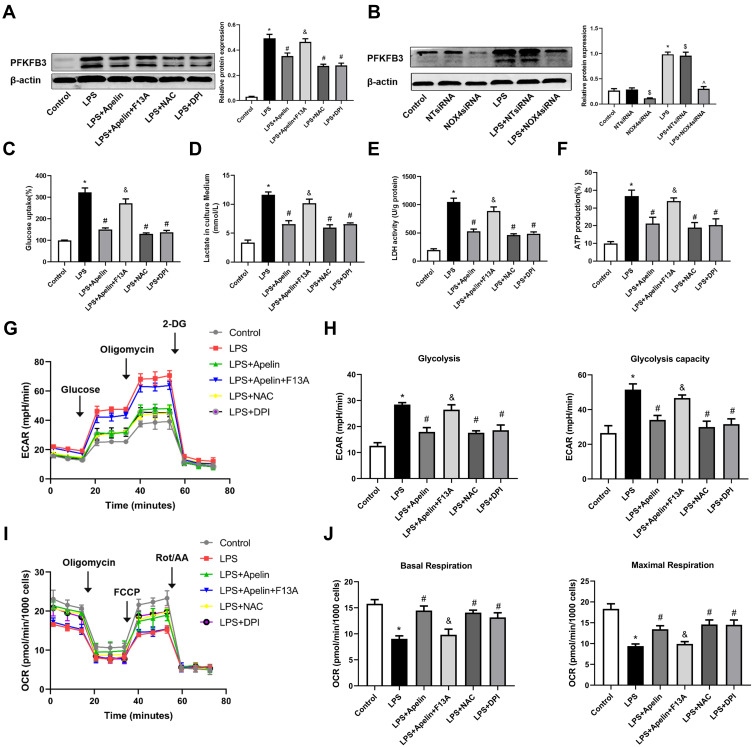Figure 7.
Apelin-13 suppressed LPS-induced pro-inflammatory responses by regulating the NOX4/ROS/PFKFB3-driven glycolysis. (A) BMDMs were treated with apelin-13 (1 umol/L), NAC (2 mmol/L) or DPI (10 umol/L) for 1 h before stimulation with LPS (1 ug/mL) for 6 h. BMDMs were pretreated with F13A (1 umol/L) for 1 h before stimulation with apelin-13. Protein levels of PFKFB3 were analyzed by Western blot. (B) BMDMs were transfected with NOX4 siRNA before stimulation with LPS for 6 h. PFKFB3 were analyzed by Western blot. (C–F) Glucose consumption, lactate production, LDH activity, and ATP production were measured. (G) ECAR was measured using the Seahorse XF. (H) Glycolysis and glycolysis capacity were quantified and displayed as histograms. (I) OCR was measured using the Seahorse XF. (J) Basal respiration and maximal respiration were quantified and shown as histograms. *P< 0.05 vs control group, #P< 0.05 vs the LPS group, &P< 0.05 vs the LPS + Apelin, $P< 0.05 vs NT siRNA group, ^P< 0.05 vs the LPS+NT siRNA (n=3).
Abbreviations: LPS, lipopolysaccharide; BMDMs, bone marrow-derived macrophages; NAC, N-Acetyl Cysteine; DPI, diphenylene iodonium; ROS, reactive oxygen species; NOX4, NADPH oxidase (NOX) 4; siRNA, small-interfering RNA; PFKFB3, 6-phosphofructo-2 -kinase/ fructose-2,6-biphosphatase 3; LDH, lactate dehydrogenase; ECAR, Extracellular acid ratio; 2-DG, 2-deoxyglucose; FCCP, Carbonyl cyanide-4 (trifluoromethoxy) phenylhydrazone; Rot/AA, Rotenone & AntimycinA; OCR, Oxygen consumption rate.

